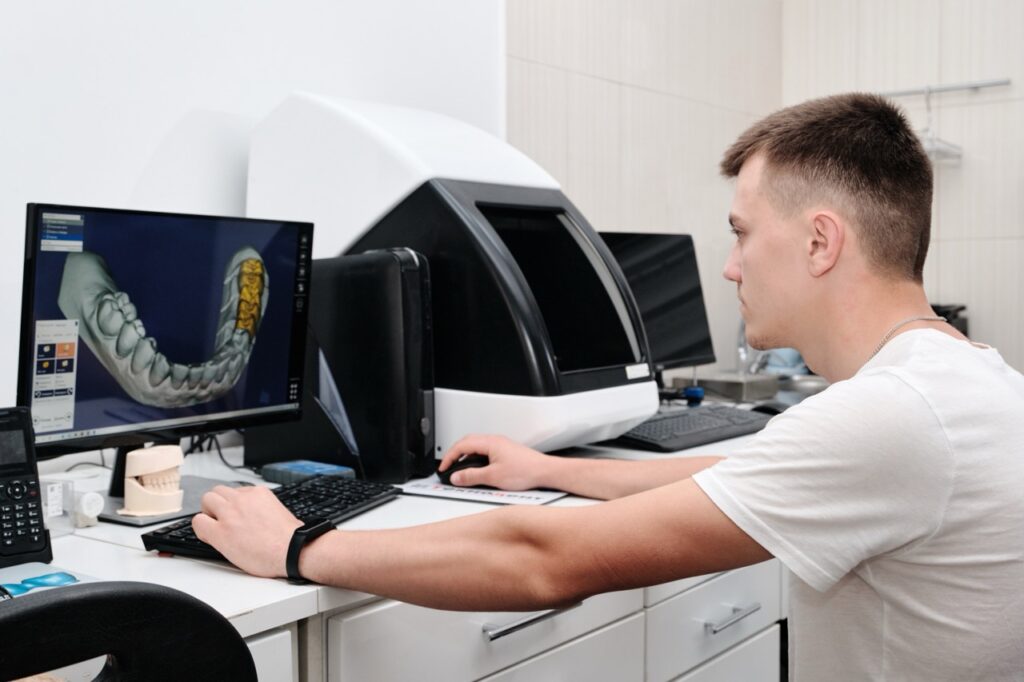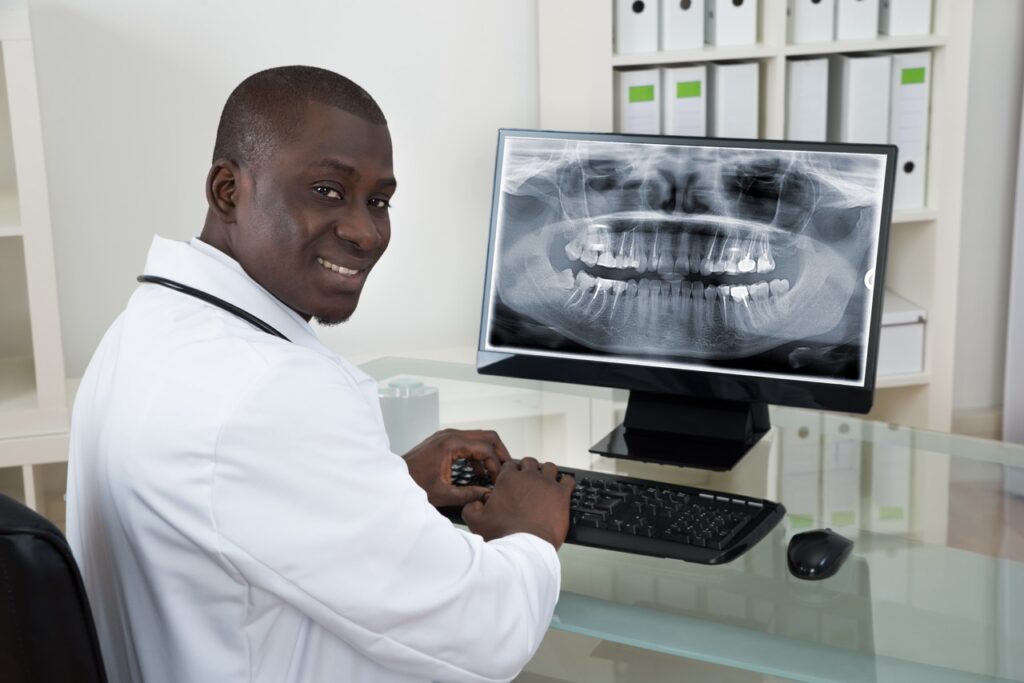Summer Smiles Discount
Save Up to 15% On 1 Treatment Item!
DOWNLOAD COUPONCrowns, bridges, dentures, dental implants—these are the dental prosthetics you may think of when you think about prosthodontics, the speciality focused on restoring and replacing teeth and other oral structures.
However, prosthodontists’ work extends beyond tooth restoration. They also often play a crucial part in enhancing or restoring facial aesthetics.
In cases of injury, congenital anomalies, or such diseases as head and neck cancer, prosthodontists create custom solutions to restore function and improve the patient’s overall appearance and confidence.
Keep reading for more information about different types of prostheses and the techniques prosthodontists use to give patients good reasons to smile again.
 Unlike dental prosthetics, which focus on the teeth and oral cavity, facial prosthetics address broader aesthetic and functional concerns.
Unlike dental prosthetics, which focus on the teeth and oral cavity, facial prosthetics address broader aesthetic and functional concerns.
Facial prosthetics are artificial devices designed to replace or augment missing or damaged facial structures. They can restore the nose, ears, eyes, or portions of the cheeks and forehead. A complete or partial prosthetic jaw can even reconstruct either the upper jaw bone (maxilla) or lower jaw bone (mandible).
Prosthodontists play a crucial part in fabricating and fitting facial prosthetics. They work closely with specialists in other fields, such as maxillofacial surgeons (those who specialize in the face, mouth, jaw, and neck) and otolaryngologists (ear, nose, and throat specialists), to ensure prosthetics are functional and aesthetically pleasing.
A 2018 cover story in the Journal of the American Dental Association highlighted “the contributions of prosthodontists throughout the FT [facial transplantation] process, from patient selection and dental evaluation to [the patient’s] long-term dental rehabilitation.”
In FTs, prosthodontists make donor masks to maintain the donor’s facial integrity, thus fulfilling the team’s ethical responsibilities. They can also plan and perform a range of dental treatment procedures for the transplant candidate. “[P]rosthodontists’ role may become even more prominent as this challenging procedure evolves,” notes the American College of Prosthodontists.
Not all ways in which prosthodontists use dental prosthetics and facial prosthetics are as dramatic as in facial transplants. Yet these other uses, too, make significant improvements in patients’ quality of life.
The most common applications include:
Dental prosthetics address issues related to damaged or missing teeth.
 Facial and dental restoration through the use of prosthetics can also enhance aesthetic appearance.
Facial and dental restoration through the use of prosthetics can also enhance aesthetic appearance.
Promoting patients’ satisfaction and enjoyment of life is another major purpose of facial and dental prosthetics.
Custom-fitted dentures, for example, not only serve functionality but also significantly enhance a patient’s comfort. They also promote better nutrition by improving chewing ability.
And maxillofacial prosthetics are often important for cancer survivors. These prosthetics restore the face’s aesthetics after oral cancer surgeries and can greatly improve patients’ emotional well-being and self-image.
Comprehensive care is a hallmark of prosthodontics.
Prosthodontists collaborate with a wide range of healthcare professionals, including dental hygienists, oral surgeons, and even psychologists, to develop a well-rounded treatment plan addressing patients’ functional and emotional needs.
This integrated approach ensures both dental and facial prosthetics are effectively combined into a complete care plan, delivering optimal results and enhancing patients’ overall health and well-being.
 If you’re experiencing tooth loss or have other concerns about your dental and oral health, explore the effective options available to you here at Penn Dental Family Practice (PDFP). We specialize in personalized prosthodontic treatments that meet your unique needs.
If you’re experiencing tooth loss or have other concerns about your dental and oral health, explore the effective options available to you here at Penn Dental Family Practice (PDFP). We specialize in personalized prosthodontic treatments that meet your unique needs.
Our team of experienced professionals delivers advanced, comprehensive treatment and uses the latest techniques in dental prosthetics. We will guide you through the process, ensuring you receive the highest quality care and support every step of the way.
Schedule your consultation with us online today or call us at 215-898-PDFP (7337) to take the first step toward regaining your confidence and enhancing your oral health through facial or dental prosthetics.
Get Your Appointment Now
We look forward to serving you and your family.